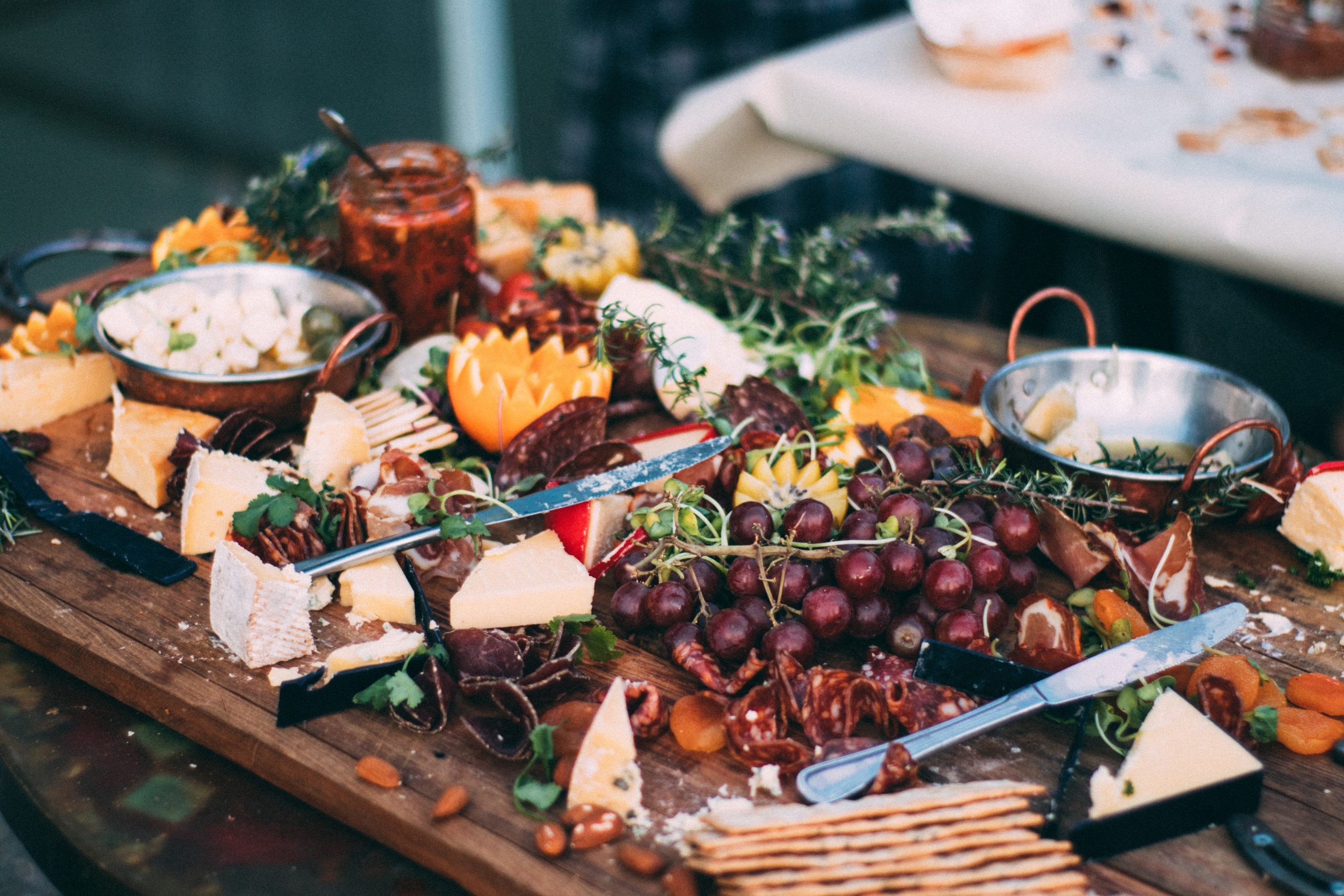Choosing cheese and telling you how to complement it and how to serve it
Cheese is the best appetizer for wine and an excellent dessert with coffee and digestifs. Cheese selection and serving is a science that can set the tone for your meal.
An ideal cheese plate, as I imagine, should remind in its magnificence of the ancient Roman bacchanals, where senators and getters in weightless tunics reclined together around endless dishes, seductively sending amber grapes into their mouths and, probably, allowing themselves many other unbridled excesses. This snack still life simply must look abundant, luxurious and light, like an impressionist sketch – as if it suddenly occurred to you to invite guests, and you quickly picked a handful of olives in your own garden, and then took out from a beautiful basket several varieties of fragrant cheese and a jar of fresh honey … The right cheese plate is what I dream of being myself, and I’m afraid I’m still a long way off: sophisticated and elegant, cool and relaxed.
For inspiration, it makes sense to view about a hundred thousand pictures with the #cheeseplatter tag on Instagram, read a dozen articles from eminent chefs and watch several YouTube videos on the same topic. Then make a plan of the plate and go to the store. As we understand, the task became more complicated a few years ago – now we have to improvise with what is on the shelves and what survived from the last trip to Europe.
The traditions of countries with advanced cheese science imply certain rules in the selection and presentation of this product. The French, for example, insist on an odd assortment of varieties: three, five, seven – and there it is not a pity. Another postulate says that cheeses should be arranged clockwise – from the softest and youngest to the hardest and most aged. Whichever approach you choose, the most important thing is to remove the cheese from the refrigerator at least five minutes before serving.
WHAT VARIETIES OF CHEESE TO CHOOSE
I agree, there is something to be nervous about. What if, out of ignorance, you choose flagrantly incongruous varieties ?! And, returning home after the party, guests will criticize: “My God, she plopped on one plate of Camembert with feta! It’s just offensive! ” Don’t panic. Remember the expected result: cool and relaxed.
I usually follow three principles:
- buy cheeses made from two types of milk – for example, cow’s and goat’s.
- choose different types – aged (parmesan, grana padano, cheddar, maasdam, gouda, kostroma, poshekhonsky), pickled (mozzarella, suluguni, ossetian, feta), soft with white and / or blue mold (goat, camembert, roquefort, brie, gorgonzola, dor blue), smoked (smoked gouda, chechil).
- I prefer to buy two or three really good cheeses instead of a dozen mediocre ones. There is also a practical trick here: the more cheeses you have, the more difficult it is to ensure that they are paired with your existing beverages.
WHAT TO ADD TO THE CHEESE PLATE
As you lay out the cheese in an elegant sequence that only you know, leave gaps between varieties to fill them in with extra flavors and garnish.
Dried fruits and berries (dried apricots, pears, figs, cherries, cranberries, raisins), nuts (I love pistachios, pecans, and macadamia, but you can use whatever you like), olives and gherkins, grapes and kumquat, as well as a few bowls with dips (something you can dip into a piece of bread or cheese) – hummus, honey, jam (my favorite is fig jam).
As for crackers, many chefs speak out disapprovingly, and even offer to give the cookies to the neighbour’s children. The right choice is good and fresh bread: baguette, ciabatta, or something multigrain and very healthy.
HOW TO SERVE CHEESE
The plate is me, of course, figuratively. Best of all is a wooden cutting board or a special cheese board. Now it is terribly fashionable not to use any plates at all, but simply cover the table with a sheet of parchment, lay out everything that is – and, in general, there is on it. If you like this approach, identify a location for the cheese and nest it there using the principles above.
For those who are still attracted to the classic serving, it is recommended to spread the cheese (cut into slices or cubes – as it happens) on a board or a beautiful dish, adding everything that seems appropriate and pleasing to the eye. If guests are late for half an hour, it is not necessary to put them in the fridge, just cover your stunning cheese still with a clean towel.
Knives for spreading soft cheese, as well as forks, toothpicks and napkins, which are usually on the table by default, will play the role of accompanying tools. Bread, accordingly, is also nearby. Ready! We send a photo to Instagram under the #cheeseplatter tag – and it’s time to go to the table.

